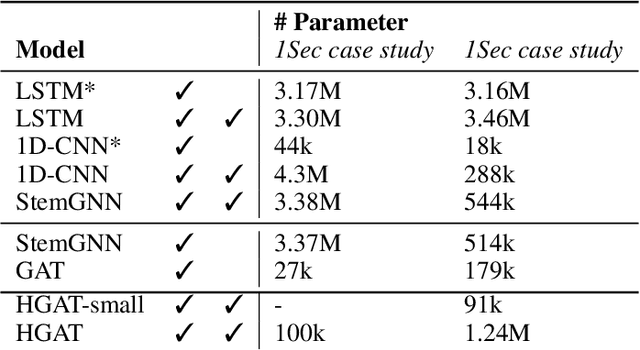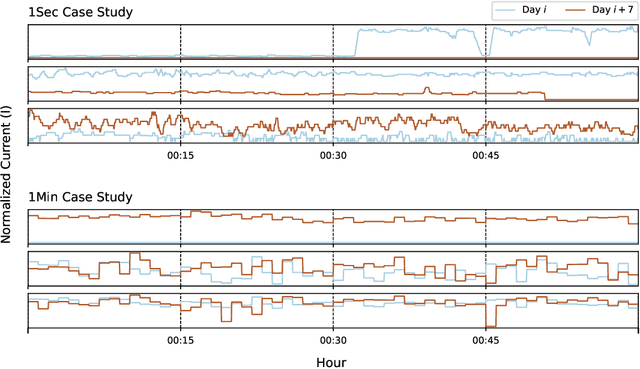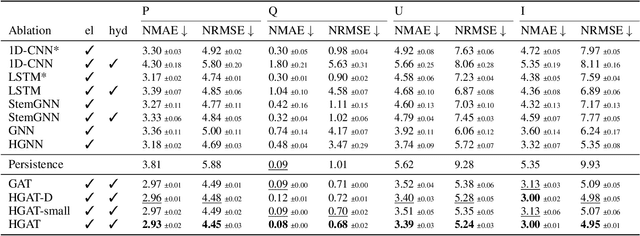Raffael Theiler
Heterogeneous Graph Neural Networks for Short-term State Forecasting in Power Systems across Domains and Time Scales: A Hydroelectric Power Plant Case Study
Jul 09, 2025



Abstract:Accurate short-term state forecasting is essential for efficient and stable operation of modern power systems, especially in the context of increasing variability introduced by renewable and distributed energy resources. As these systems evolve rapidly, it becomes increasingly important to reliably predict their states in the short term to ensure operational stability, support control decisions, and enable interpretable monitoring of sensor and machine behavior. Modern power systems often span multiple physical domains - including electrical, mechanical, hydraulic, and thermal - posing significant challenges for modeling and prediction. Graph Neural Networks (GNNs) have emerged as a promising data-driven framework for system state estimation and state forecasting in such settings. By leveraging the topological structure of sensor networks, GNNs can implicitly learn inter-sensor relationships and propagate information across the network. However, most existing GNN-based methods are designed under the assumption of homogeneous sensor relationships and are typically constrained to a single physical domain. This limitation restricts their ability to integrate and reason over heterogeneous sensor data commonly encountered in real-world energy systems, such as those used in energy conversion infrastructure. In this work, we propose the use of Heterogeneous Graph Attention Networks to address these limitations. Our approach models both homogeneous intra-domain and heterogeneous inter-domain relationships among sensor data from two distinct physical domains - hydraulic and electrical - which exhibit fundamentally different temporal dynamics. Experimental results demonstrate that our method significantly outperforms conventional baselines on average by 35.5% in terms of normalized root mean square error, confirming its effectiveness in multi-domain, multi-rate power system state forecasting.
Graph Neural Networks for Electric and Hydraulic Data Fusion to Enhance Short-term Forecasting of Pumped-storage Hydroelectricity
Apr 04, 2024Abstract:Pumped-storage hydropower plants (PSH) actively participate in grid power-frequency control and therefore often operate under dynamic conditions, which results in rapidly varying system states. Predicting these dynamically changing states is essential for comprehending the underlying sensor and machine conditions. This understanding aids in detecting anomalies and faults, ensuring the reliable operation of the connected power grid, and in identifying faulty and miscalibrated sensors. PSH are complex, highly interconnected systems encompassing electrical and hydraulic subsystems, each characterized by their respective underlying networks that can individually be represented as graphs. To take advantage of this relational inductive bias, graph neural networks (GNNs) have been separately applied to state forecasting tasks in the individual subsystems, but without considering their interdependencies. In PSH, however, these subsystems depend on the same control input, making their operations highly interdependent and interconnected. Consequently, hydraulic and electrical sensor data should be fused across PSH subsystems to improve state forecasting accuracy. This approach has not been explored in GNN literature yet because many available PSH graphs are limited to their respective subsystem boundaries, which makes the method unsuitable to be applied directly. In this work, we introduce the application of spectral-temporal graph neural networks, which leverage self-attention mechanisms to concurrently capture and learn meaningful subsystem interdependencies and the dynamic patterns observed in electric and hydraulic sensors. Our method effectively fuses data from the PSH's subsystems by operating on a unified, system-wide graph, learned directly from the data, This approach leads to demonstrably improved state forecasting performance and enhanced generalizability.
 Add to Chrome
Add to Chrome Add to Firefox
Add to Firefox Add to Edge
Add to Edge